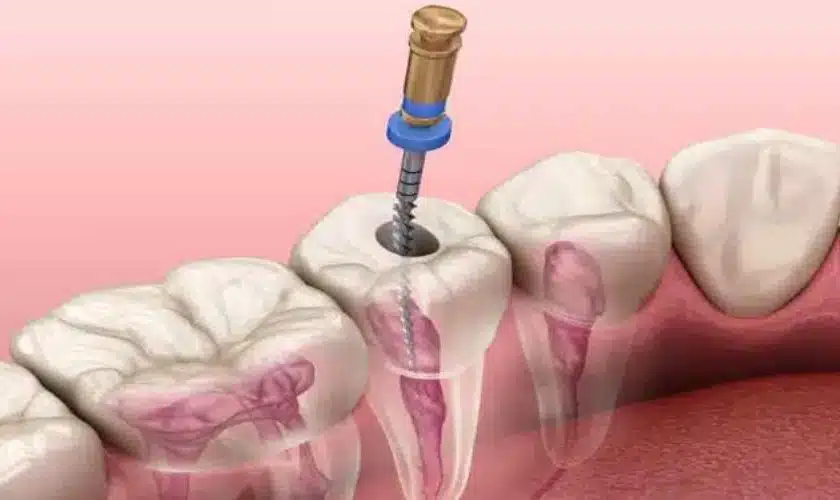Are you tired of dealing with tooth pain that just won’t go away? It’s time to say goodbye to the agony and hello to relief with root canal treatment. While many people fear this procedure, it’s actually a common and effective solution for saving damaged or infected teeth.
In this blog post, we’ll take a closer look at what exactly a root canal is, how it works, and what you can expect during the procedure. Say farewell to dental discomfort and get ready to smile again!
What is a Root Canal?
A root canal is a dental procedure used to repair and save a tooth that has become infected or damaged. The inside of the tooth contains soft tissue called the pulp, which can become inflamed or infected due to decay, cracks in the tooth, or repeated dental procedures.
During a root canal procedure, your dentist will numb the area surrounding the affected tooth before creating an opening on top of it. They’ll then remove any damaged pulp from inside using specialized tools and clean out the space to prevent further infection.
After removing all of the infected material, your dentist will fill in the empty space with a rubber-like material called gutta-percha before sealing off the top of your tooth with a filling or crown. This process helps protect against future infections while also restoring normal function to your tooth.
While some people may experience mild discomfort during and after their root canal procedure, most patients find that they feel relief almost immediately afterward.
How Does a Root Canal Work?
A root canal is a dental procedure that removes the infected or inflamed pulp from the tooth’s root. But how does it work?
First, your dentist will numb the area with local anesthesia to ensure you don’t feel any pain during the treatment. They’ll create an opening in your tooth to access the infected pulp and remove it using specialized tools.
Once all of the damaged pulp has been removed, they’ll clean out any remaining debris and disinfect the inside of your tooth. Then, they’ll fill in the space with a rubber-like material called gutta-percha to seal off your tooth’s interior and prevent further infection.
After this step is complete, your dentist will likely recommend placing a crown on top of your treated tooth for additional protection against future damage or decay.
While root canals may sound intimidating at first glance, they’re actually quite routine procedures that can help alleviate painful symptoms caused by infections or inflammation within a tooth’s root.
Types of Root Canals
There are different types of root canals, which depend on the number of roots and the type of tooth being treated.
A single-rooted tooth like an incisor or canine usually requires only one canal to be cleaned and filled. On the other hand, multi-rooted teeth such as molars have two or three canals that need cleaning.
In some cases, a conventional root canal may not suffice and endodontic surgery may be necessary. This includes procedures such as apicoectomy or hemisection where a portion of the affected tooth is removed.
Another type of root canal treatment is called regenerative endodontics, which involves using certain materials to help regenerate damaged pulp tissue in young patients with underdeveloped roots.
The choice of what type of root canal to undergo will depend on various factors including age, location, the extent of damage, overall dental health, and personal preferences. It’s best to consult your dentist for professional advice on what course of action to take.
Procedure for a Root Canal
The procedure for a root canal typically involves several steps and can be completed in one or more appointments depending on the severity of the infection.
The first step is to numb the area around the infected tooth with local anesthesia to minimize any discomfort during the procedure. Next, an access hole is drilled into the top of the tooth to reach and remove any infected pulp from within.
After removing all of the infected tissue, special tools are used to clean out and shape each root canal before filling it with a biocompatible material known as gutta-percha. This helps prevent future infections from developing inside your tooth.
In some cases, a temporary filling may be placed over your treated tooth while you wait for your permanent crown to be made. Once ready, your dentist will cement this crown onto your now-strengthened natural tooth structure.
While many people fear root canals because they believe they’re painful procedures, modern techniques have made them relatively comfortable experiences that help save teeth from being lost due to infection or decay.
Post-Root Canal Care
After undergoing a root canal treatment, it is essential to take proper care of the treated tooth for faster healing and recovery. Here are some tips for post-root canal care:
Firstly, avoid chewing or biting down on the treated tooth until it has been fully restored with a crown or filling. This may cause damage to the temporary filling placed after the procedure.
Secondly, maintain good oral hygiene by brushing your teeth twice daily and flossing regularly. This helps in preventing any further infection from developing.
Thirdly, follow your dentist’s instructions regarding taking pain medications or antibiotics prescribed after the surgery.
Fourthly, stick to soft foods that require minimal chewing until you can comfortably resume normal eating habits.
Attend all scheduled follow-up appointments with your dentist for regular check-ups and monitoring of healing progress.
Following these simple steps will assist in ensuring successful recovery after a root canal treatment.
Conclusion
Root canal treatment is an effective way to alleviate tooth pain caused by damage or infection in the pulp of a tooth. With modern technology and advanced techniques, the procedure has become less painful and more efficient than ever before.
If you are experiencing any signs of tooth pain or sensitivity, it’s important to schedule an appointment with your dentist as soon as possible. They can determine if a root canal is necessary and provide you with appropriate care options.
Remember that after undergoing a root canal procedure, proper post-treatment care will help ensure the success of the treatment long-term. This includes maintaining good oral hygiene habits and attending regular dental check-ups.
With these tips in mind, you can say goodbye to tooth pain and enjoy healthy teeth for years to come!

